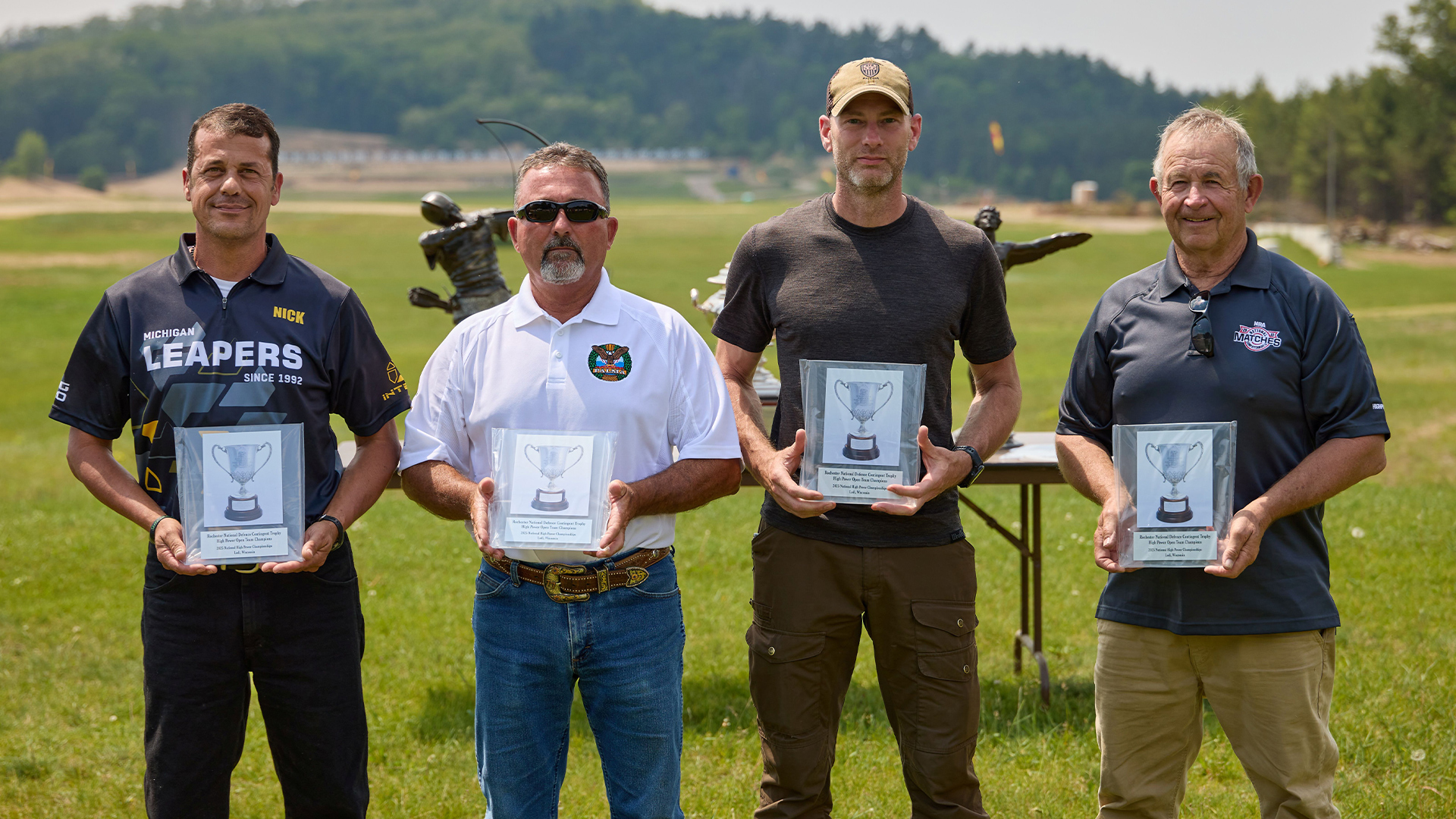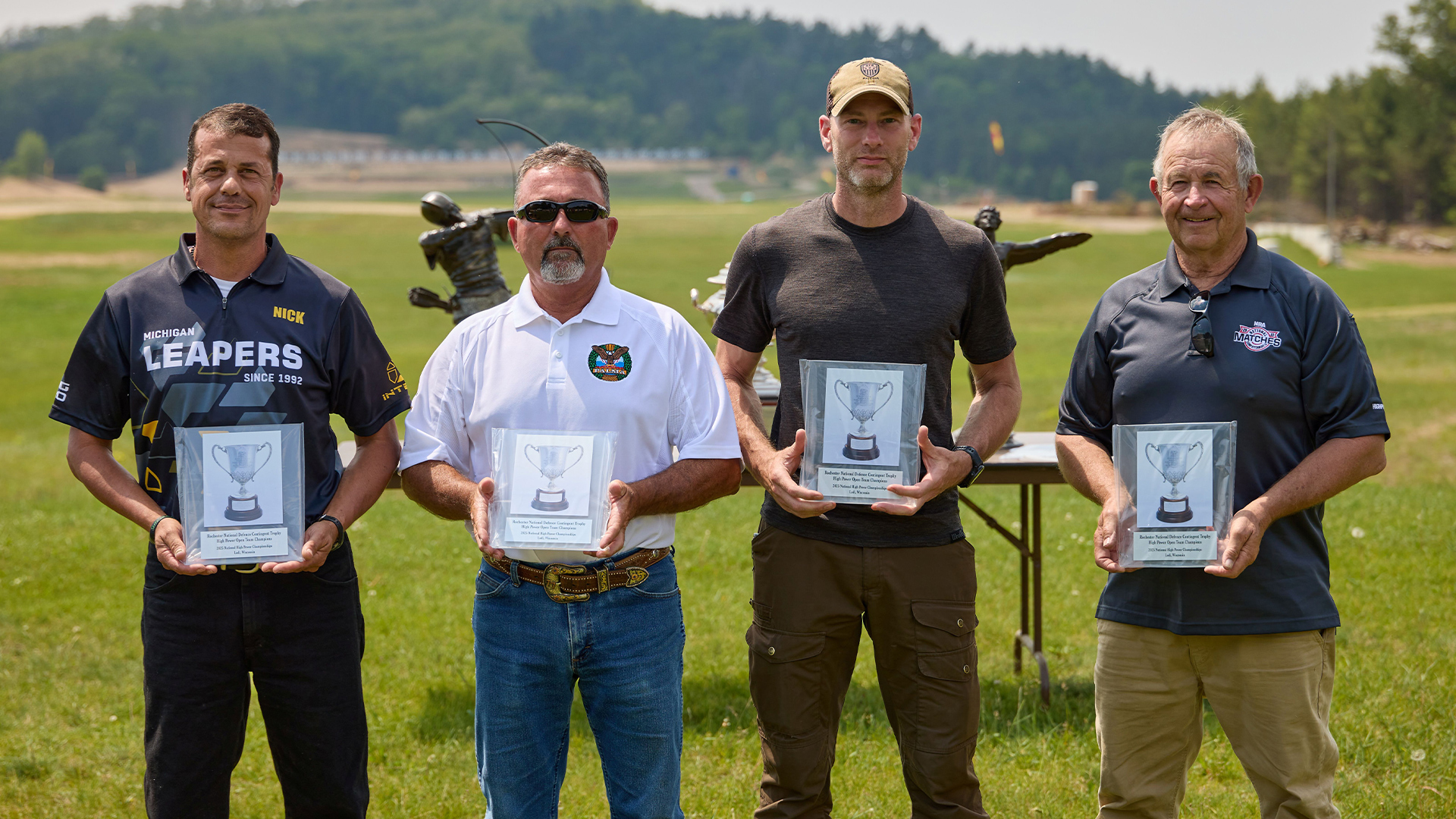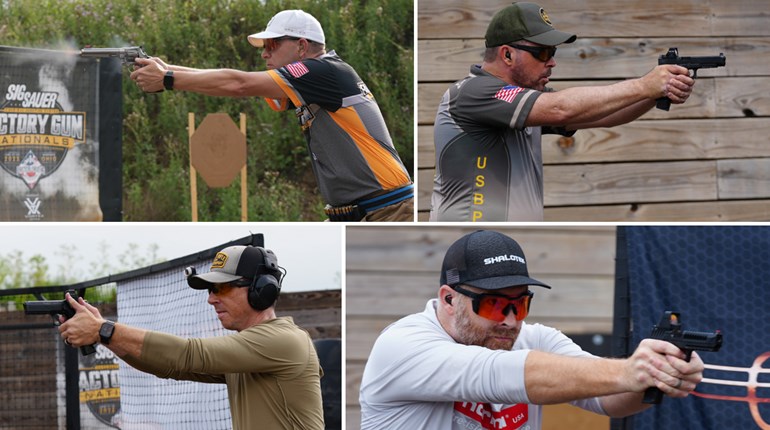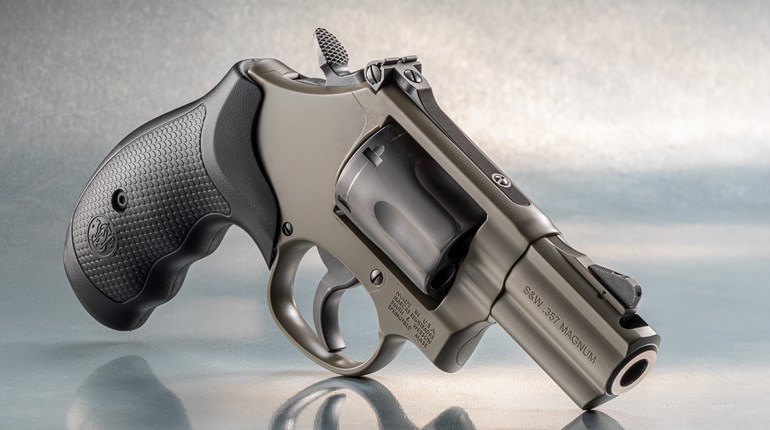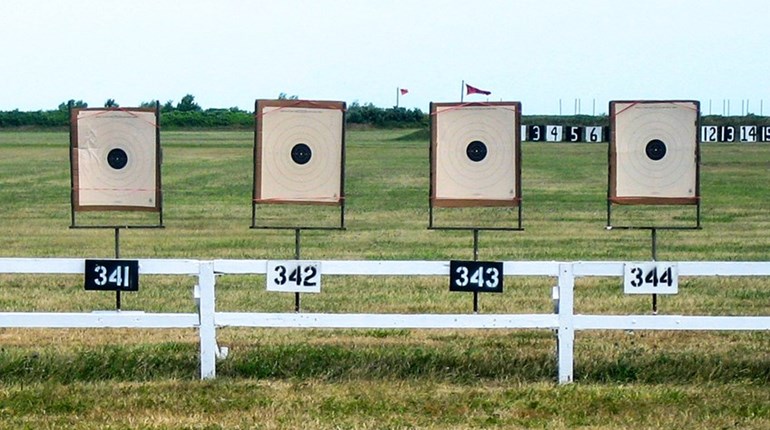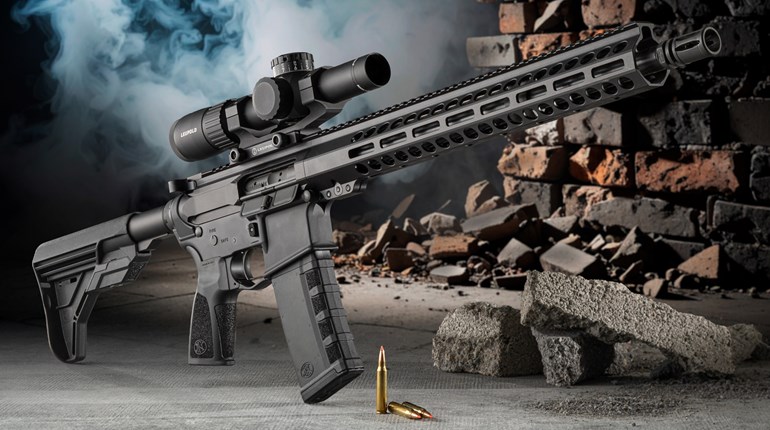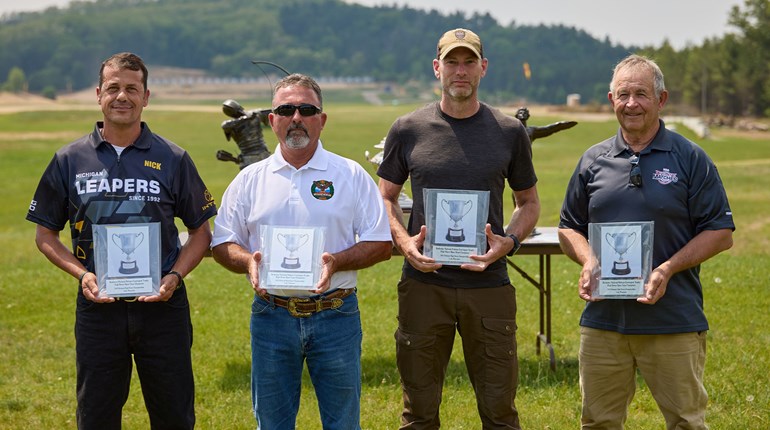
As two high performance medium handgun calibers, it’s inevitable that .357 SIG and .357 Magnum will be compared. Introduced in 1935, the .357 Magnum, was touted as a long-distance hunting round for small to medium game. It evolved into a great self-defense and law enforcement round that could penetrate car bodies and other types of light barriers.
The .357 SIG was introduced in 1994 as a round with the same power as a .357 Magnum, and would fit in a 9 mm and .40 S&W-sized semi-automatic pistol. An advantage of the .357 SIG is that it can be chambered in pistols with detachable magazines, providing potent firepower to shooters.

The name “.357 SIG” elicits its similarity to the .357 Magnum, in spite of the .357 SIG using 0.355-inch bullets like the 9 mm, conveying that the semi-automatic round was as powerful as the revolver round. But is it? Published data is from a 4-inch barrel for both the .357 SIG and .357 Magnum as those are standard test barrel lengths as defined by SAAMI. But there’s a difference.
A revolver 4-inch test barrel is “vented.” That is, there is a gap between the chamber and barrel, in the same way a revolver has a gap between the cylinder and barrel. Thus, the velocities you get from the test barrel should be the same as you get from a real revolver. The 4-inch test barrel for semi-automatic cartridges is a single piece, just like a real semi-automatic pistol, so the speeds in a test barrel should also be the same as they would be from a regular pistol.

Here, we focus on published ballistics for 125-grain bullets, because that is a bullet weight shared by both of these cartridges. Published ballistics from Federal, Remington, Speer and Winchester for the .357 SIG are a 125-grain bullet at 1,350 f.p.s. from a 4-inch barrel. The exception is one load by Speer (of its three loads offered) that runs at 1,325 f.p.s. In fact, that one Speer load is the only one that does not produce full power, and even this one is only 25 f.p.s. slower than the others. SIG Sauer lists its .357 SIG ammo at a velocity of 1,356 f.p.s., but with no barrel length indicated.
Things become more complicated regarding .357 Magnum ammunition. There is full power and reduced power .357 Magnum ammunition. Full power .357 Magnum loads push a 125-grain bullet to 1,450 f.p.s. from a 4-inch barrel. This is the case with Remington, SIG Sauer, Speer and Winchester ammo. Federal’s 125-grain loads show a published speed of 1,440 f.p.s. Hornady offers two 125-grain loads, one with an XTP bullet and the other with a FTX bullet. They are both rated at 1,500 f.p.s., however these ballistics are from an 8-inch vented barrel.
Remington and Winchester have reduced .357 Magnum loads, too. Remington has a 125-grain BJHP (Brass Jacketed Hollow Point, i.e., Golden Saber) listed at 1,220 f.p.s., and Winchester has two reduced loads. The Defender series 125-grain bullet has a published speed of 1,325 f.p.s., and WinClean ammo has a speed of 1,370 f.p.s. Reduced loads offer less recoil than full powered ammo, which can be a good thing for recoil-sensitive people, and for use in lightweight revolvers where recoil can be brutal.
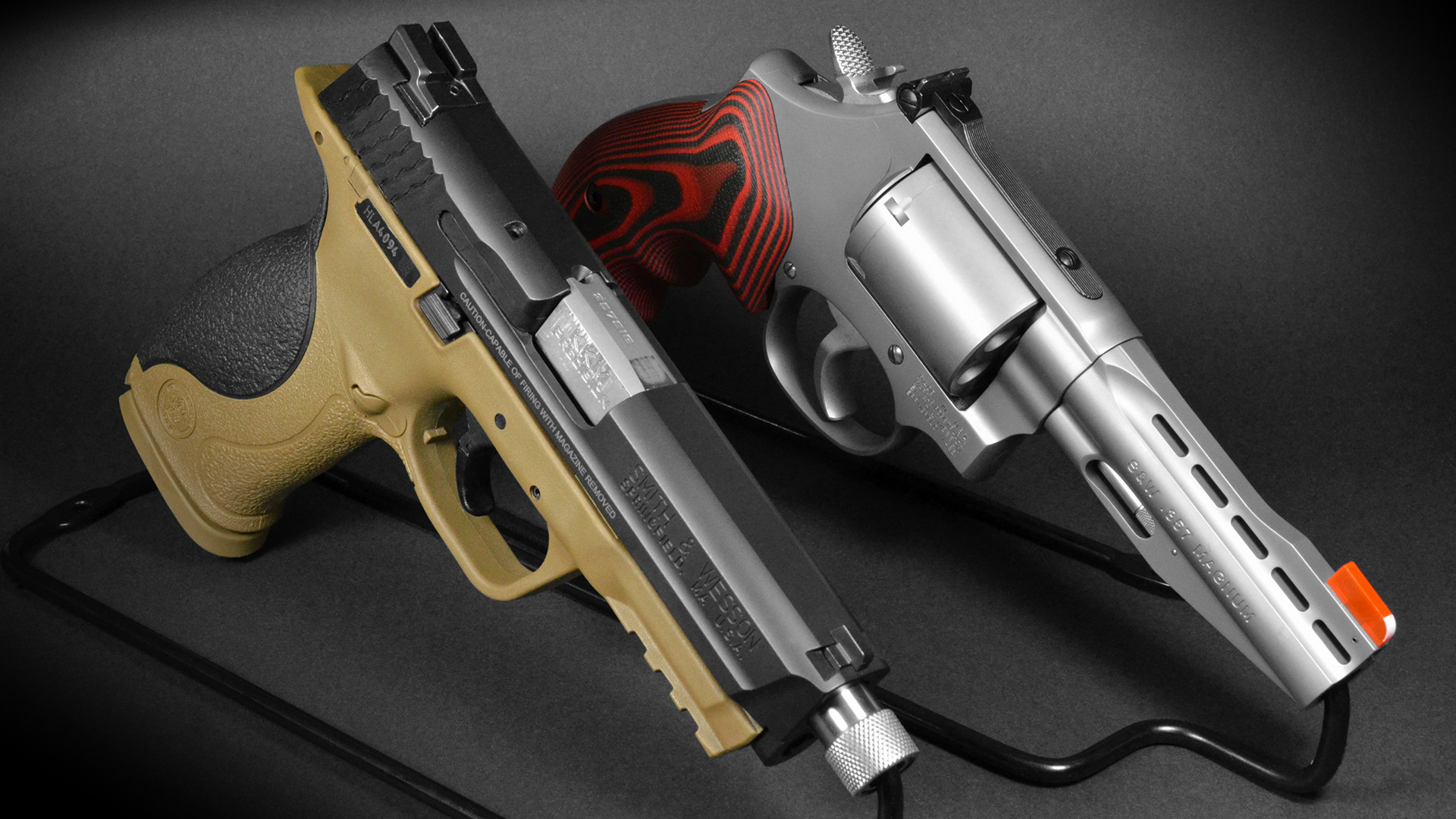
Which is more powerful?
Now back to our point. To be fair, we must compare full power ammunition. In this case, the .357 Magnum wins, because full power ammo pushes a 125-grain bullet 100 f.p.s. faster than the .357 SIG in barrels of the same length. It’s that simple.
Comparing full power .357 SIG to watered-down .357 Magnum ammo is an apples to oranges comparison. In this case, the .357 SIG can be as powerful or more powerful than the .357 Magnum. However, that’s not a fair comparison.
Do these rounds really produce the speeds they claim? For this article, I grabbed guns and ammo and headed to the range for a side-by-side comparison.

My primary .357 Magnum test revolver is a Smith & Wesson Performance Center Model 686 with a 4-inch barrel. I also have data from a S&W Model 65 fired a year or so ago, but the forcing cone broke and it has since been retired. The data from these two guns is quite similar. My .357 SIG data is from two pistols with conversion barrels, a Glock G20 with 4.6-inch Lone Wolf barrel, and a S&W M&P40 with 4.9-inch KKM barrel.
.357 Magnum
Remington’s 125-grain SJHP .357 Magnum round runs at 1,514 f.p.s. from my Model 686, while its 125-grain JSP clocks at 1,505 f.p.s. Both speeds are higher than the advertised 1,450 f.p.s. My old records show the SJHP running at 1,464 f.p.s. from my Model 65, and at 1,465 f.p.s. from an old 4-inch Smith & Wesson Model 686 I used to own.
Speer’s 125-grain GDHP .357 Magnum clocked at 1,462 f.p.s. from the Model 686, and 1,431 f.p.s. from the Model 65. SIG Sauer’s .357 Magnum 125-grain V-Crown ran at 1,398 f.p.s. from the Model 686, and the Federal 125 JHP load ran at 1,409 f.p.s. These last two loads were a bit short of their published speeds, but not by much. Underwood’s 125-grain FMJ .357 Magnum load is rated at 1,700 f.p.s. (no barrel length indicated). It clocked at 1,508 f.p.s. from the 686 and 1,504 f.p.s. from my Model 65.
Remington’s reduced power 125-grain BJHP runs 1,244 f.p.s. from my Model 686, which is close to its published speed of 1,220 f.p.s. But this slow-poke is not good for a speed comparison with .357 SIG, because it is deliberately loaded down and does not represent full-powered .357 Magnum ammo.

.357 SIG
Speeds from the .357 SIG are also fast. For example, Federal’s 125-grain HST .357 SIG clocked at 1,417 f.p.s. from the 4.6-inch Lone Wolf barrel, and at 1,435 f.p.s. from the 4.9-inch KKM barrel. Both of these speeds are faster than the advertised speed of 1,350 f.p.s. from a 4-inch barrel, but that’s expected from my longer barrels.
SIG Sauer’s 125-grain V-Crown .357 SIG load runs at 1,419 f.p.s. from the 4.6-inch barrel, and at 1,438 f.p.s. from the 4.9-inch barrel. SIG’s 125-grain FMJ was a little slower at 1,356 f.p.s. from the 4.6-inch barrel and 1,385 f.p.s. from the 4.9-inch barrel. My old data shows Federal 125-grain FMJ running 1,424 f.p.s. from the 4.9-inch KKM barrel.
Winchester’s 125-grain FMJ runs at 1,400 f.p.s. from the 4.6-inch Lone Wolf barrel. PPU’s 125-grain FMJ clocks at 1,395 f.p.s. from the 4.6-inch barrel and 1,424 f.p.s. from the 4.9-inch barrel. Underwood has a 125-grain JHP .357 SIG load rated at 1,475 f.p.s. (no barrel length indicated). It clocked 1,404 f.p.s. from my 4.9-inch barrel.

Average speed of the six 125-grain full power .357 Magnum rounds was 1,466 f.p.s. from my 4-inch Model 686. The average is close to the nominal 1,450 f.p.s. published speed.
Average speed of the six .357 SIG 125-grain loads from my 4.9-inch KKM barrel was 1,418 f.p.s. That’s close to the .357 Magnum data, but it’s a little short even from my longer barrel, though faster than the published speed of 1,350 f.p.s. from a 4-inch barrel. That’s right in the range of the speed one might expect from a barrel 0.9 inches longer than a 4-inch barrel. The usual rule of thumb is around 50 f.p.s. per inch of barrel length, and it’s 68 f.p.s. faster than the published 1,350 f.p.s. for this bullet weight.
One other factory-loaded bullet weight these rounds share is 180 grains. DoubleTap loads a 180-grain hard cast lead bullet in the .357 SIG. But, as with the 125-grain ammo, the .357 SIG 180-grain load is slower than the same weight in the .357 Magnum. DoubleTap’s 180-grain .357 SIG clocks at 1,002 f.p.s. from the 4.6-inch Lone Wolf barrel, and at 996 from my 4.9-inch KKM barrel. The Remington 180-grain SJHP .357 Magnum round clocks at 1,162 f.p.s. from my S&W 686, giving it a 160 f.p.s. advantage over the same weight .357 SIG round.
My results show both .357 Magnum and .357 SIG ballistics are a close fit to their published speeds. There will always be some differences depending on the lot number of the ammo and which gun (and barrel length) they are fired from, but my recorded speeds are close to the advertised velocities, with .357 SIG rounds faster because of the longer barrels.

Something to note: Revolvers can produce different velocities—even if they are the same model and barrel length. For many years, the Speer Reloading Manuals have included a chapter entitled, “Why ballisticians get gray,” by David Andrews that was originally published in 1974. It is chapter 18 in my 14th Edition Speer manual (2007). David lists the velocities of several loads from .357 Magnum ammunition in 30 different guns, some of which are duplicate models. The difference in speed between identical guns can be striking. For example, a 125-grain load fired through three different S&W Model 19s with a 6-inch barrel produced 1,372 f.p.s., 1,400 f.p.s. and 1,603 f.p.s. results—a 231 f.p.s. difference between the slowest and fastest barrels of the same length. That’s why there is always some caution when reporting velocities from a given gun. Differences in chamber and barrel specs, and cylinder and barrel gap can influence bullet speed. For the record, the cylinder (barrel) gap on my Model 686 is 0.004 inches.

Both the .357 SIG and .357 Magnum offer a powerful cartridge good for target shooting, hunting and self-defense. Both shoot a variety of bullet weights at high speed for a flat trajectory. You can’t go wrong with either one. But the top prize for raw power goes to the .357 Magnum. It’s not a huge difference, amounting to 100 f.p.s. for 125-grain bullets in barrels of the same length. But more is more, so the .357 Magnum is still King.
Read more: Pistol Barrel Length And Velocity





